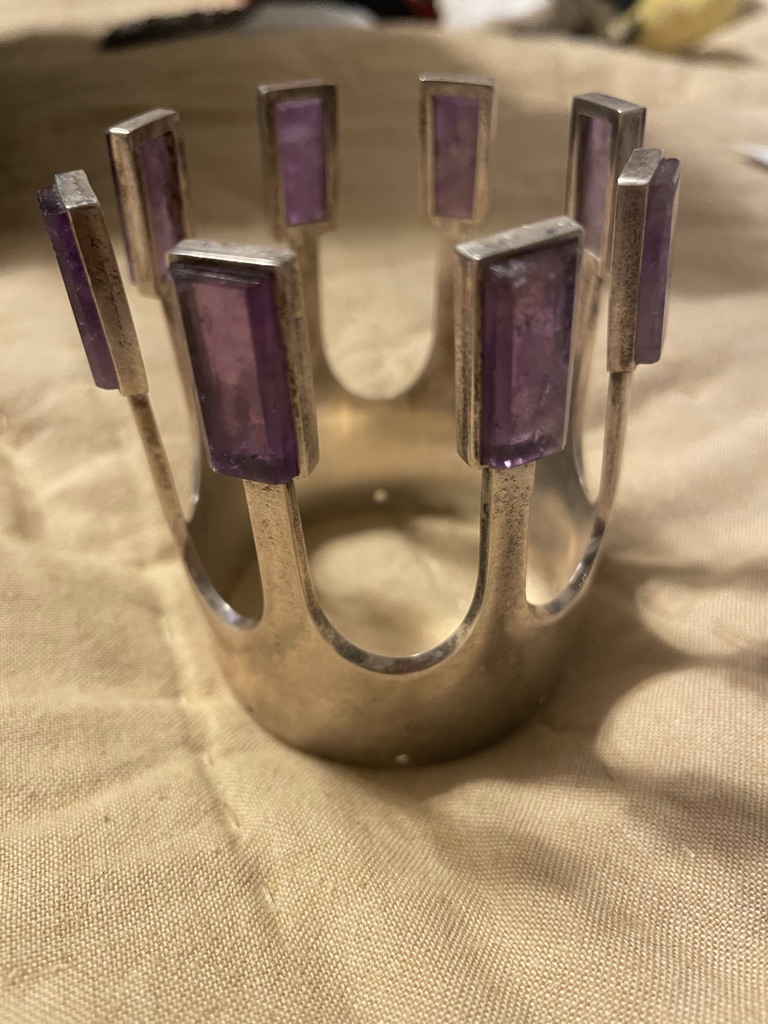Text/Context
Interviewer – Tell me about Kubb.
LN – Um, kubb is a Scandinavian game that you generally would play outside on a small field of grass, with, in my experience, friends, at some sort of, like, spring or family get-together when the weather is nice.
Interviewer – Ok, um, how do you set it up, and what are the pieces that you have?
LN – So the players split into two teams, each team has five blocks, which are about a foot tall, and the blocks represent their army. Their army gets lined up on opposite ends of the field, so one army against the other. And in the middle of the playing field there’s a taller block, representing the king, which the players are trying to knock down or kill.
Interviewer – Do you, how do you kill the king, and do you try to kill the king first, or do you kill the armies, or does it matter what order?
LN – Um, so the starting team gets a set of six sticks, which are used to knock down first the blocks of the other team’s army, before they can knock down the king pin.
Interviewer – What happens if you knock down the king pin first?
LN – If a team knocks down the king pin before knocking down all of the other team’s blocks then the team that knocks down the king loses.
Interviewer – Okay. And do you just, or what happens if you run out of sticks and you haven’t knocked down all of the army?
LN – Then the sticks are transferred to the other team, and the second team has to collect the blocks, their blocks that had fallen. Those blocks get thrown on the field between the king and the opposing army.
Interviewer – And what happens then with those?
LN – Those blocks are then stood up and the second team needs to knock down those blocks before they can hit— before they can knock down the opposing team’s blocks.
Interviewer – Okay, So they have to hit, so then the second team has to hit the extra blocks, and then the regular army, and then the king.
LN – Correct.
Interviewer – So they end up just building up more and more things that they have to hit.
LN – Right
Interviewer – And then, if they don’t hit all of the blocks then…
LN – Then it’s just the other team’s turn.
Interviewer – And they, um, do they have to hit the whole army of five all over again? On the other side’s team. Or do they continue with whatever was left of the last round?
LN – They continue with the remaining blocks, so they only have to knock down the ones that they didn’t— that they missed before.
Interviewer – So then, you said, they knock down the armies, and then you go for the king? And that’s game over, you win?
LN – Yes.
Interviewer – Is it something you play once and put it away or do you play multiple times in a row when you take it out? Like is it a long or short game?
LN – The rounds are short so you can play a whole bunch of rounds.
Interviewer – Do you really like this game? Has this stuck in your head since you first learned it?
LN – Ya, it’s a lot of fun. I learned it when I was about thirteen, so 11 years ago. And, um, I learned how to play it when I was—when my family was visiting friends in Sweden, with our family friends at a picnic during the summertime. Um, so, when we came back home, we were actually able to find a set of kubb blocks, and so we have a set at our house that we play with, with friends in the summer.
Interviewer – So is this something that people usually buy, or is it traditionally handmade, do you know?
LN – Um, I would think handmade. They’re just pretty crude, like, blocks. They’re like, what, 3×3 inches by 8-12 inches or whatever? Something like that. And the king pin only has a few extra lines to set it apart.
Interviewer – Is this game usually played by kids? You said you learned it when you were 13, so that’s pretty young. Is it usually just a kids game?
LN – Um… no? I would say it’s a game played by everyone. But it’s—it has simple rules so kids can learn from a pretty young age.
Interviewer – Cool.
LN – It’s not all that complicated, but I don’t have a ton of background knowledge on it.
Interviewer – But your impression is its a really old game that’s been played for a long time? By… Scandinavians…?
LN – Ya. It’s a classic game and it seems to be widespread in Sweden, if not Scandinavia.
Analysis
The game reminds me of other yard games like corn hole, or throwing horse shoes. They are all seasonal because they are played outside and rely on decent weather, and involve tossing objects with as much accuracy as a person can muster. Kubb seems to have more of a history or a narrative attached to it, because there is a king piece and army pieces, and you have to “kill” the other team’s army. I’ve never heard of corn hole or horse shoes having a narrative. The informant has taught other people—mainly their friends—how to play it, even though their friends have never been to Sweden. Kubb does not seem to be very widespread where the informant lives (USA East Coast), because they have never met anyone else outside of their family who was familiar with the game. It’s a competitive game, but also pretty chill, so it is fun to play while having a conversation with friends on both sides of the field, just enjoying a nice day.

